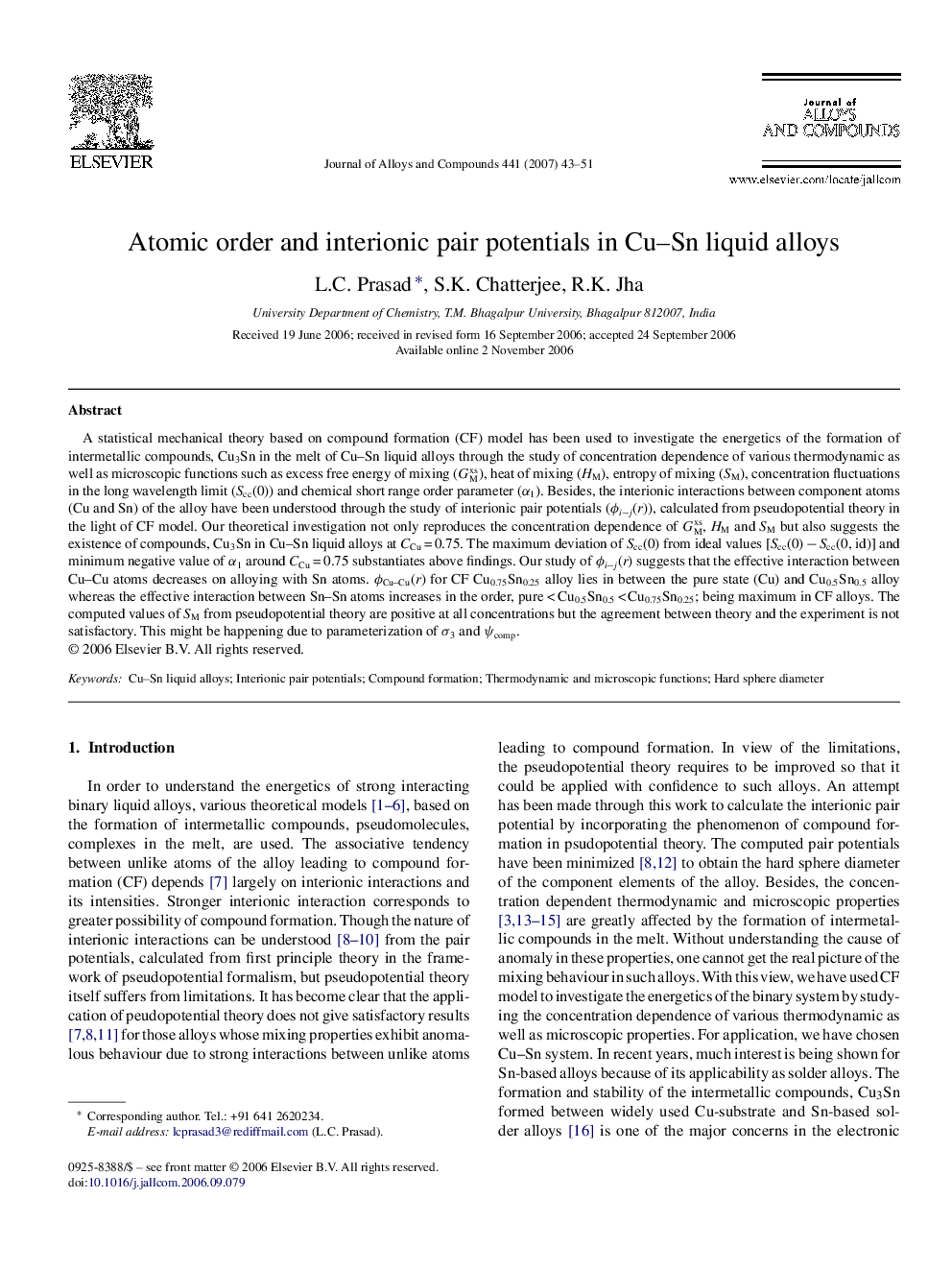| Article ID | Journal | Published Year | Pages | File Type |
|---|---|---|---|---|
| 1625714 | Journal of Alloys and Compounds | 2007 | 9 Pages |
A statistical mechanical theory based on compound formation (CF) model has been used to investigate the energetics of the formation of intermetallic compounds, Cu3Sn in the melt of Cu–Sn liquid alloys through the study of concentration dependence of various thermodynamic as well as microscopic functions such as excess free energy of mixing (GMxs), heat of mixing (HM), entropy of mixing (SM), concentration fluctuations in the long wavelength limit (Scc(0)) and chemical short range order parameter (α1). Besides, the interionic interactions between component atoms (Cu and Sn) of the alloy have been understood through the study of interionic pair potentials (ϕi−j(r )), calculated from pseudopotential theory in the light of CF model. Our theoretical investigation not only reproduces the concentration dependence of GMxs, HM and SM but also suggests the existence of compounds, Cu3Sn in Cu–Sn liquid alloys at CCu = 0.75. The maximum deviation of Scc(0) from ideal values [Scc(0) − Scc(0, id)] and minimum negative value of α1 around CCu = 0.75 substantiates above findings. Our study of ϕi−j(r) suggests that the effective interaction between Cu–Cu atoms decreases on alloying with Sn atoms. ϕCu–Cu(r) for CF Cu0.75Sn0.25 alloy lies in between the pure state (Cu) and Cu0.5Sn0.5 alloy whereas the effective interaction between Sn–Sn atoms increases in the order, pure < Cu0.5Sn0.5 < Cu0.75Sn0.25; being maximum in CF alloys. The computed values of SM from pseudopotential theory are positive at all concentrations but the agreement between theory and the experiment is not satisfactory. This might be happening due to parameterization of σ3 and ψcomp.
